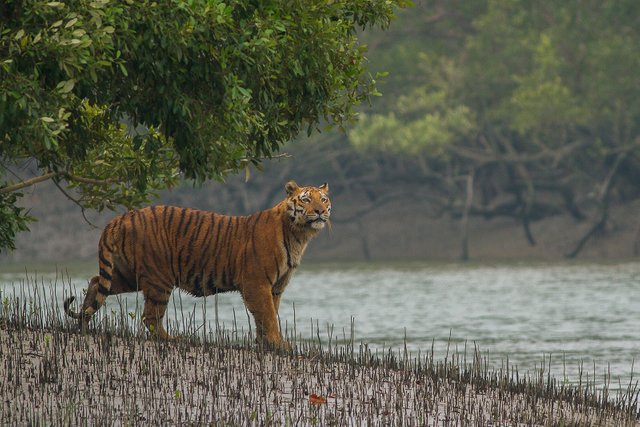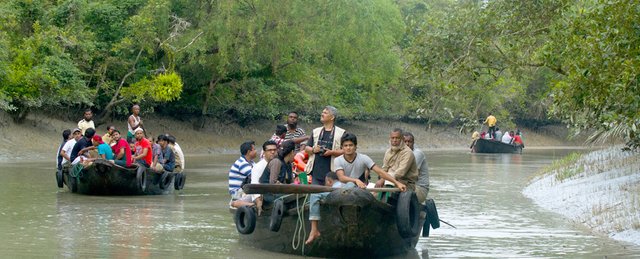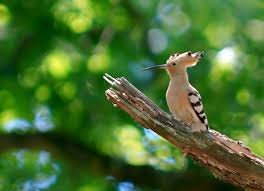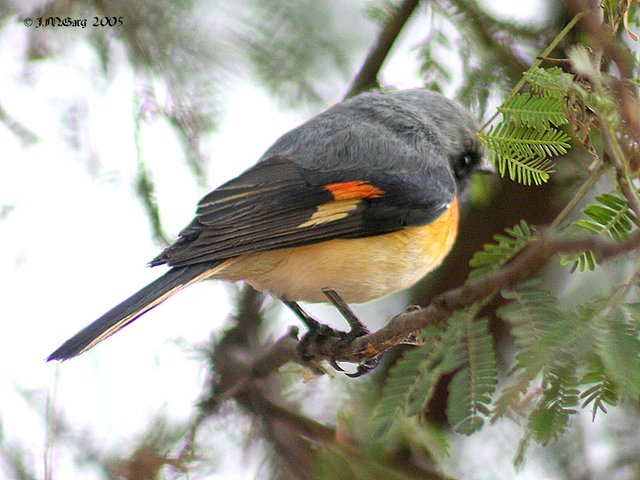World's Largest Mangrove Forest
The Sundarbans is a vast forest in the coastal region of the Bay of Bengal; considered one of the natural wonders of the world, it was recognised in 1997 as a UNESCO World Heritage Site. Located in the delta region of Padma, Meghna and Brahmaputra river basins, this unique forest area extends across South 24 Parganas and, North 24 Parganas districts of West Bengal State, India and Khulna, Satkhira, Bagerhat districts of Bangladesh. The Sundarbans is the world's largest coastal mangrove forest, with an area of approximately 10,000 sq km; of which approximately 6,000 sq km is situated in Bangladesh and approximately 4,000 sq km in India. The Bangladeshi and Indian parts of the Sundarbans, while in fact adjacent parts of the uninterrupted landmark, have been listed separately in the UNESCO World Heritage List: as "Sundarbans" and "Sundarban National Park" respectively. The Sundarbans are a network of marine streams, mud shores and mangrove forests. The region is known to contain numerous species of animals, birds and reptiles, including Royal Bengal Tiger, Chital Deer, Crocodile and Snakes . On 21 May 1992, the Sundarbans was recognized as a Ramsar Site of ecological importance.





The history of the area can be traced back to 200–300 AD. A ruin of a city built by Chand Sadagar has been found in the Baghmara Forest Block. During the Mughal period, the Mughal Kings leased the forests of the Sundarbans to nearby residents. Many criminals took refuge in the Sundarbans from the advancing armies of Emperor Akbar. Many have been known to be attacked by tigers.[3] Many of the buildings which were built by them later fell to hands of Portuguese pirates, salt smugglers and dacoits in the 17th century. Evidence of the fact can be traced from the ruins at Netidhopani and other places scattered all over Sundarbans.[4] The legal status of the forests underwent a series of changes, including the distinction of being the first mangrove forest in the world to be brought under scientific management. The area was mapped first in Persian, by the Surveyor General as early as 1764 following soon after proprietary rights were obtained from the Mughal Emperor Alamgir II by the British East India Company in 1757. Systematic management of this forest tract started in the 1860s after the establishment of a Forest Department in the Province of Bengal, in British India. The management was entirely designed to extract whatever treasures were available, but labour and lower management mostly were staffed by locals, as the British had no expertise or adaptation experience in mangrove forests.[5]
The first Forest Management Division to have jurisdiction over the Sundarbans was established in 1869. In 1875 a large portion of the mangrove forests was declared as reserved forests under the Forest Act, 1865 (Act VIII of 1865). The remaining portions of the forests were declared a reserve forest the following year and the forest, which was so far administered by the civil administration district, was placed under the control of the Forest Department. A Forest Division, which is the basic forest management and administration unit, was created in 1879 with the headquarters in Khulna, Bangladesh. The first management plan was written for the period 1893–98.[6][7]
In 1911, it was described as a tract of waste country which had never been surveyed nor had the census been extended to it. It then stretched for about 266 kilometres (165 mi) from the mouth of the Hugli to the mouth of the Meghna river and was bordered inland by the three settled districts of the 24 Parganas, Khulna and Bakerganj. The total area (including water) was estimated at 16,900 square kilometres (6,526 sq mi). It was a water-logged jungle, in which tigers and other wild beasts abounded. Attempts at reclamation had not been very successful. The Sundarbans was everywhere intersected by river channels and creeks, some of which afforded water communication throughout the Bengal region both for steamers and for native ships.
Hi upvoted for you plz upvote me
https://steemit.com/love/@keerthi12345/hai-steemit-friends-very-good-morning